Debrah's Blog
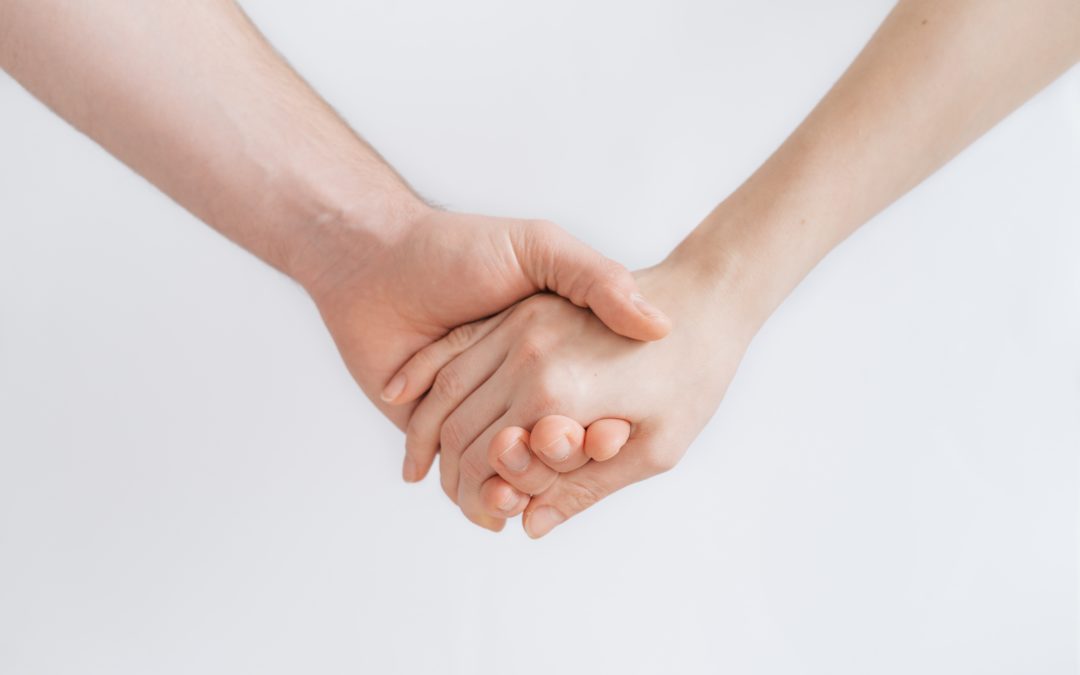
Maintaining Awareness of Antisemitism Can Help Us Heal It
After the defeat of Nazi Germany in World War II, many people across the world reacted in shock at the news and photographs documenting the brutality suffered by the Jewish people in concentration camps across Europe. As Jewish support groups and organizations cropped up in its aftermath, many seemed convinced that the world had learned an important lesson, and the ethnic-based violence and bigotry that caused the Holocaust would steadily decrease.
Unfortunately, that does not appear to be the case.
Across the globe, antisemitic attacks on the Jewish community continue to inflict major human rights violations. The Associated Press reported that across the world, antisemitic attacks had grown by 13 percent in 2018. In New York City alone, antisemitic hate crimes rose by 63 percent in 2019 compared to last year. What’s more, anti-Jewish rehtoric has been spewed by domestic and foreign leaders alike while a whopping one-third of Americans don’t believe that six million Jews perished in the Holocaust.
This violence and ignorance is truly staggering. I believe one of the most effective ways to fight back against this hatred and disbelief is through education and awareness.
At the US Holocaust Memorial Luncheon earlier this year, my fellow industry colleagues and I sought to bridge the gap between ignorance and awareness by promoting the conversation surrounding antisemitism advocacy.
The US Holocaust Memorial Luncheon
In March, I hosted the eighth annual New York Real Estate luncheon at the US Holocaust Museum with real estate executives Jeffrey Feil (The Feil Organization), Lloyd Goldman (BLDG Management) and Alan Lazowski (LAZ Parking). The event was a wonderful opportunity for over 100 top real estate executives to learn how to help combat antisemitism in our communities.
Jeffrey Feil, my colleague and fellow host, says, “With the global resurgence of antisemitic violence, rhetoric and vandalism, there is a dire need to bring the mission of the U.S. Holocaust Memorial Museum outside of its walls in Washington, DC, to those who do not have the opportunity to visit the Museum firsthand.”
During the event, we were honored to hear from historian Deborah E. Lipstadt, who currently serves as a member of the United States Holocaust Memorial Council and chair of the Anti-semitism and Holocaust Denial committee. During her speech, Lipstadt discussed her most recent book, “Anti-semitism: Here and Now”. The book details the rise of enduring hatred and how antisemitism is a gateway toward other forms of bigotry, hatred and ethnic and racial violence. As the New York Times explains, the book is meant not to break new academic ground, but bring awareness to the scope of antisemitic threats across the globe.
Awareness Can Bring Us Out of the Dark
At any age, people have the ability to learn right from wrong. It’s important that throughout every industry and every educational system, we continue to spread awareness on antisemitic attacks. UNESCO cites raising awareness as a way governments can support the effort. By helping leaders, criminal justice officials and the general public understand the impact of antisemitism, we can make strides to challenge that hatred through capacity-building and education. This kind of awareness helps authorities recognize and investigate incidents, provide evidence of the security needs in Jewish communities, and reassure them by offering solidarity in times of attacks or threats.
It is my hope that by continuing to bring awareness of these attacks to our communities, small and large, we can reshape the systems that support antisemitism and help heal it from the inside out. No longer should anyone have to hide or live in fear of practicing their faith or representing their heritage. As we advocate for better ways to root out prejudice, our conversations of tolerance and love can set the tone for societal transformation, helping to safeguard and honor Jewish communities across the globe.
While we still have much work to end antisemitism, I encourage executives, no matter their industry, to continue holding conversations of support and connection to Jewish and other minority communities so that we can create a more equal and tolerant world.
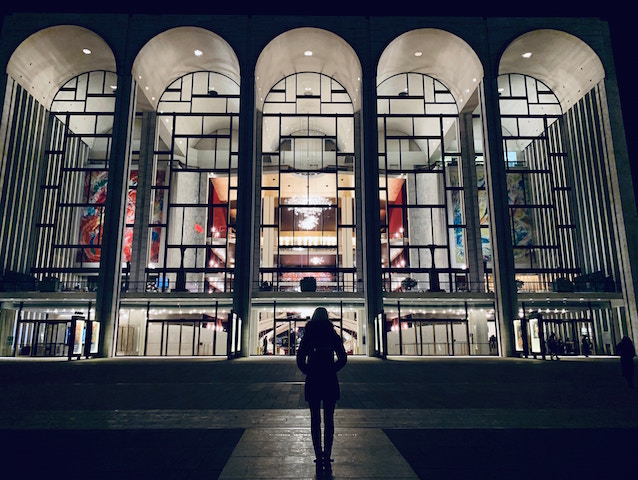
How the 1964 New York World’s Fair Helped Create the Lincoln Center
When the New York World’s Fair opened in 1964, its long-lasting influence would not only extend to the far reaches of the nation, but it would also leave a lasting impact on one of New York City’s most iconic landmarks: Lincoln Center.
Although the World’s Fair was stationed in Flushing, Queens, Lincoln Center served as the official performing arts venue during the exposition’s run. Many may be surprised to learn that the arrangement itself was the impetus for creating Lincoln Center’s New York State Theater, later renamed the David H. Koch Theater in 2008.
While Lincoln Center and the World’s Fair became an important alliance in the history of the city, the story of the center’s creation also begins with an equally important relationship.
A Valuable Partnership
The partnership between the Fair and Lincoln Center can be traced back to September 1959.
Robert Moses, then Commissioner of New York City’s Department of Parks, suggested to John D. Rockefeller, the president of Lincoln Center for the Performing Arts (LCPA), that the center’s campus would make a more convenient locale for some of the festival’s performances — more so than the temporary buildings at Queen’s Flushing Meadows.
One reason to establish LCPA as a satellite site was to accommodate visitors while also offering theater-goers superior acoustics and the convenience of city nightlife. At first, Rockefeller seemed apprehensive about the proposal because Lincoln Center was only 113 days old with a campus that was still largely a field of turned dirt.
Fortunately, Rockefeller saw the mutual benefit in supporting supplemental programming for both the Fair and Lincoln Center. As a result, Reginald Allen was appointed Operations Director to oversee plans for the development project, which would eventually create Lincoln Center’s now-famous theaters that hosted the World’s Fair programming. While not completed until the late 1960s, the Metropolitan Opera House and The Juilliard School were constructed in anticipation of the event.
Funding a Future Cultural Center
By 1960, the New York State Governor, Nelson Rockefeller, saw the advantages of constructing new performance buildings and started to seek state funding for the project. LCPA itself sought $15 million in grants, which New York state was ready to approve as long as the city matched its contribution. The investment would cover the cost of construction for the Theater for Dance, while the residual funds would be later applied to the Library Museum.
In 1961, the New York State Legislature passed a bill to provide funding for the Theater for Dance, now called the David H. Koch Theater, and by mid-April the World’s Fair Commission and the LCPA officially agreed that Lincoln Center would be the Fair’s main host for opera, symphonies, ensemble music, ballet and theater.
However, the project still had one more obstacle to overcome. During the announcement for the state legislation, General Maxwell D. Taylor, the LCPA’s president, lamented that New York City had not yet established the support to match the state’s contribution. Luckily, his hopeful speech fostered the diligence and patience needed to generate the City Council’s approval in August 1962.
A Landmark is Born
With this new funding, a cultural center was born that would help to advance New York as a theater city, differentiating it from the cabaret and Broadway shows it had so closely been admired for over the previous decades.
During the World’s Fair, the center hosted programs that marked William Shakespeare’s 400th birthday and featured an impressive lineup of international and domestic performances.
After the event, the bulk of the programming between 1964 and 1965 was credited to the New York City Ballet, which opened with a performance of Stars and Stripes in the New York State Theater (Koch Theater) on April 23, 1964.
Today, the David H. Koch Theater has stood for over five and a half decades, bringing in 5 million visitors each year and hosting some of Lincoln Center’s main attractions that serve as a nexus for excellence in dance and performing arts. From traditional Chinese dances to jazz and gospel performances, the venue continues to showcase the global heritage originally promoted during the 1964 World’s Fair. Thanks to the advent of this major historic event, we have a permanent icon that offers a rich artistic heritage and identity for New Yorkers and a cultural touch point for audiences all around the world.
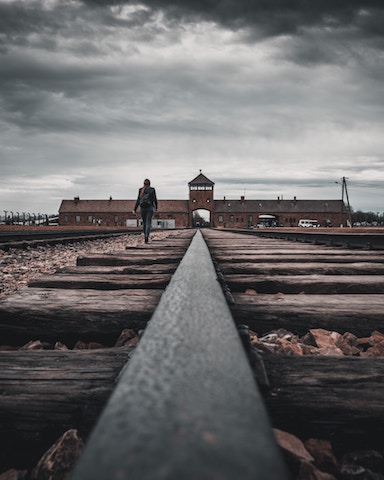
A Journey into the Past and Reflections on the Future: The Museum of Jewish Heritage’s Auschwitz Exhibit
In May, the Museum of Jewish Heritage — A Living Memorial to the Holocaust opened up its much anticipated Auschwitz exhibit to the public. Titled “Auschwitz: Not long ago, Not far away,” the New York City exhibition is the most comprehensive showcase on Auschwitz that’s ever been shown in North America. It also marks the seventy-fourth anniversary of the Jewish liberation from the infamous concentration camp.
Exploring the camp’s dual identity as a historical preservation site and as a symbol of how hatred and human barbarity impact us today, the exhibit has already brought over 200,000 visitors through its doors within its first couple months of opening.
Taking a Journey through the Past
The exhibit offers visitors an in-depth look into the perils and tragedies that Jewish prisoners faced. Comprised of historical artifacts, it details Jewish life and culture in pre-war Europe up through the rise of Nazism in WWII. As visitors progress through the exhibition, each room chronologically recounts the transformation of Auschwitz from a Polish town known as Oswiecim to the largest documented mass-murder site in human history, where an estimated one million people were killed.
Before even stepping into the exhibit, visitors will catch a haunting glimpse of a German, Model 2 freight-train car which transferred Jews to ghettos and concentration camps in occupied Poland during the war.
Inside the Auschwitz exhibit, visitors can explore twenty galleries filled with over 700 original objects on loan from over 20 institutions across the globe, including the Anne Frank House and Yad Vashem in Jerusalem. Hundreds of personal items like suitcases, shoes and eyeglasses from the era allow viewers to get an intimate glance into the life of the camp’s survivors and victims. Other artifacts on display include part of the original barracks for prisoners from the Auschwitz III-Monowitz camp, gas masks and several possessions of S.S. officers. Over 400 photographs are also sourced, mainly from the Auschwitz-Birkenau State Museum.
Unique to the NYC exhibition, The Museum of Jewish Heritage incorporates nearly 100 rare artifacts from its own collection that echo the experience of survivors and liberators who immigrated to the greater New York area after the war ended. Artifacts include: Alfred Kantor’s sketchbook and portfolio that contains over 150 original paintings and drawings from camps like Auschwitz and Theresienstadt; prisoner registration forms and IDs; personal letters; the trumpet that Louis Bannet (“the Dutch Louis Armstrong”) credited with saving his life while imprisoned in Auschwitz; and a Torah scroll rescued from the Bornplatz Synagogue in Hamburg, Germany.
The Exhibit’s Legacy and Impact
While the NYC exhibit continues to attract visitors, it has already left a lasting legacy for those who have experienced the exhibit’s message abroad. In a successful run at Madrid’s Arte Canal Exhibition Centre, it was expanded two times and attracted more than 600,000 attendees, making it one of the most visited exhibitions in Europe last year.
Bruce C. Ratner, the Chairman of the Museum’s Board of Trustees, says “As the title of the exhibit suggests, Auschwitz is not ancient history but living memory, warning us to be vigilant, haunting us with the admonition ‘Never Again.’ It is a prod to look around the world and mark the ongoing atrocities against vulnerable people.”
As human rights violations increase across the globe today, the exhibit is more meaningful than ever. The Washington Post reported last year that two-thirds of Millennials don’t know about Auschwitz while one-third of Americans don’t believe 6 million Jews perished in the Holocaust.
Ratner continues, “While we had all hoped after the Holocaust that the international community would come together to stop genocide, mass murder, and ethnic cleansing, these crimes continue. And there are more refugees today than at any time since the Second World War. So my hope for this exhibit is that it motivates all of us to make the connections between the world of the past and the world of the present, and to take a firm stand against hate, bigotry, ethnic violence, religious intolerance, and nationalist brutality of all kinds.”
My own parents were Holocaust survivors, and museums and exhibits like these help keep me beholden to my heritage — past, present and future. Even so, the extraordinary retelling of Jewish history is not just important for those with Jewish heritage, but for people of all backgrounds to learn, remember and experience these stories so that we might find the empathy and power to help end the unjust persecutions that occur today.
You can visit the Museum of Jewish Heritage’s website to buy tickets to the Auschwitz exhibit which runs through January 3, 2020.

The Central Park Conservancy’s Women’s Committee Celebrates 35th Anniversary with Forever Green Fundraiser
The Women’s Committee of the Central Park Conservancy celebrated its 35th anniversary in 2018, an event which is also seeing positive ripple effects into 2019. In honor of the occasion, the committee and the Central Park Conservancy’s Campaign, Forever Green: Ensuring the Future of Central Park, combined forces to raise a minimum of $5 million which helps fund the $10 million redevelopment initiative for the Conservatory Garden.
Located off Fifth Avenue between 104th to 106th Streets, Central Park’s six-acre Conservatory Garden remains the only formal garden in the entire park. While the garden is known for its lilac trees, gorgeous perennials and reblooming roses, its last significant restoration was in 1983, the same year the Women’s Committee was established. Since then, decades of weather and other damages have demanded the need for upgrades and repairs.
The Forever Green Restoration Initiative
The restoration project largely focuses on the redesign of the Conservatory Garden’s renowned horticultural elements and hardscapes, nearly all of which are original to the Garden’s 1937 construction. A network of new paths and plazas and infrastructure upgrades including walkway improvements, the modernization of the Untermeyer and Burnett fountains and the refurbishment of the Wisteria pergola.
According to the Central Park Conservancy’s brochure, the garden is known as one of the world’s greatest masterworks of formal garden design due to the expert design of the original founders. The Garden is divided into three smaller sections with distinct styles including Italian, French and English patterns with an iconic wrought-iron Vanderbilt Gate at the main entrance. It’s no surprise that the likes of Martha Stewart and Michael Bloomberg include themselves as supporters of the Conservatory Garden, often attending the annual Frederick Law Almstead Awards Luncheon, which raises funds for the park’s management and projects.
The Garden is a particularly significant project for the Women’s Committee as the horticultural direction has long been in the hands of notable women including Lynden Miller who led the site’s 1983 restoration, and long-time Garden curator Diane Schaub.
The Women’s Committee Blooming Legacy
Founded by Norma Dana in 1983, The Women’s Committee of the Central Park Conservancy is comprised of a dynamic group of four women who dedicate their time to the beautification and preservation of Central Park and its many projects.
Today, the committee boasts over 1,000 members who spearhead programs that allow anyone to invest in the betterment of the park and its gardens. Since the group’s founding, they have raised over $175 million and have spearheaded projects like the revitalization of the Charles A. Dana Discovery Center, two renovation projects at the Safari Playground, and the recreation of the urns at Bow Bridge.
The committee is part of a larger vision served by the private, not-for-profit Central Park Conservancy to preserve, restore and enhance Central Park in partnership with the local community. Their goal is to raise awareness and encourage investment in the green space.
Each year, they raise about 15 percent of the Conservancy’s $67 million annual budget through numerous membership and charitable events. Through the passion and dedication of these incredible women, we may still have this green space for decades to come.
If you wish to support to the Conservancy Garden’s restoration project, please donate at the link.
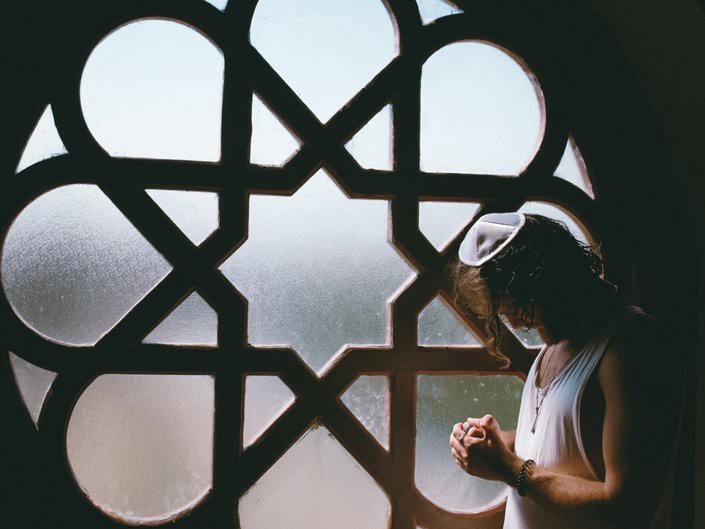
Debrah Lee Charatan Reflects on Holocaust Survivors’ Resilience
This article, by Talia Feldberg, was published on Patch.com
New York holds a long tradition of embracing diverse immigrant communities who come to America seeking better lives. After World War II ended, the metropolitan area saw a substantial increase in Jewish immigrants, sheltering thousands of persecuted and displaced refugees. Today, many NYC charities and organizations still honor that legacy.
Selfhelp Community Services, a nonprofit organization founded in 1936 to help those fleeing Nazi Germany build lives in America, now provides support for the rent-burdened elderly. The Joseph and Pauline Charatan residence, located at 333 Lenox Road in Brooklyn, began moving in residents of all backgrounds, including half a dozen Holocaust survivors, during the winter of 2018. With a ribbon cutting ceremony scheduled for later this year, all residents are now settled into its 57 apartments.
Debrah Lee Charatan, a real estate veteran and Selfhelp chair member, sponsors the organization through her charity, The Charatan Family Foundation. Charatan has always been attracted to philanthropist pursuits surrounding Jewish heritage and culture, but the mission proved especially important to her being the daughter of Holocaust survivors for whom the residence is named.
Drawn to the inspiring stories of these survivors, Charatan is thrilled with Selfhelp’s unique ability to provide them, and all of its 65 tenants, with a full-time social worker to ensure each resident gets the care they need.
“For survivors who have experienced so much anguish in their lifetimes, it’s an honor to help care for residents so they can live happily and comfortably in their golden years,” says Charatan.
One such resident and survivor, Mr. P, was referred by Selfhelp’s Holocaust Survivor Program. Having previously lived in an overcrowded apartment where he slept on a couch, Mr. P is now overjoyed and grateful to have his own apartment at the Lenox Road residences where he serves as a translator for those who speak Russian.
“A lot of times these residents have no living family members or friends in the area, but Selfhelp allows them to stay active members within their own community,” says Debrah Lee Charatan.
Another resident and survivor, 81-year-old Mr. S, speaks Russian as his first language and Hungarian as his second. He moved to the United States to be closer to his son after having lived in Israel for 27 years where his wife passed away. In NYC, he ended up sharing a bedroom in a bad housing situation, paying more than 50 percent of his income on rent. At first, it was a struggle for Mr. S to move because he wasn’t familiar with the neighborhood and it was his first time living independently. But as they do for other residents, the Selfhelp team helped him get acquainted with the area, and introduced him to the neighborhood’s local grocery store and post office.
Debrah Lee Charatan believes that Selfhelp’s dedication to these residents helps make an already resilient group of survivors feel stronger through the independent lifestyles they provide while also giving them emotional support through a strong social community.
Mrs. Z, 79-years-old, is another survivor who faced rent insecurity before moving into the Lenox Road property. She paid more rent than her income allowed which became burdensome on her family. Overwhelmed and concerned she was losing her independence, she qualified for affordable housing through a special government program and now rents an apartment at a lower rate. Mrs. Z is happy she can remain financially independent.
“I think their stories are a beautiful testimony to how far they’ve come since the dire experiences of the Holocaust,” says Charatan. “To watch them rebuild their lives even when they haven’t had the means to do so, is truly inspiring.”
One of Selfhelp’s research projects found that by 2020, there will be over 38,000 Holocaust survivors who are over 75 years old — the age at which the cohort begins to require special services. This last generation is expected to have complex needs, both health-related and economic. An estimated 52 percent of survivors who will be considered ‘poor’ at this time will have significant needs for home health care and financial assistance, highlighting the current usefulness of organizations like Selfhelp in years to come.
No matter these survivors’ personal stories, Charatan believes the messages we can learn from them inform our own personal relationship with our Jewish heritage and culture which can, in turn, build stronger bonds with our local communities.
“The more we shine a light on these survivors’ struggles,” says Charatan, “the more we can embrace their experiences and our own history in a more impactful way.”
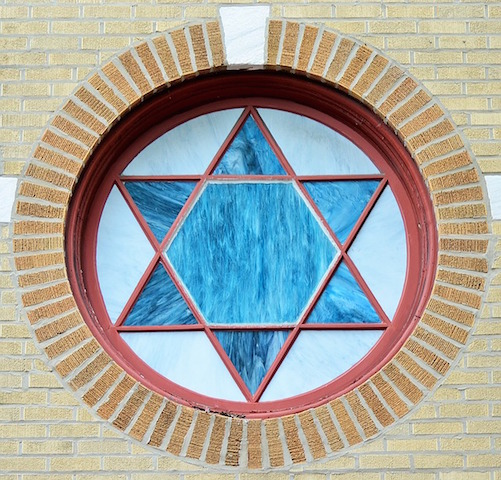
A Walking Tour of The Lower East Side’s Jewish Landmarks
Today, New York City’s Lower East Side (LES) neighborhood is known for its eclectic mix of bistros, bodegas and Buddhist temples that have overtaken now-defunct synagogues nestled in between many old shmatte shops; remnants which pay tribute to a bygone era.
Around the turn of the century, the Lower East Side was known largely for its international Jewish community. While the landscape may have dramatically transformed over time, many Jewish monuments and locations can still be found throughout the neighborhood.
A walking tour of LES’s Jewish monuments and landmarks offer insight into the community’s significant heritage within NYC’s historical, cultural melting pot. As you explore the working class neighborhood, check out some of these prominent, Jewish religious sites, local attractions and eateries:
Religious Sites
Eldridge Street Synagogue
12 Eldridge St. near Division Street
Amidst Chinese restaurants, hair salons and local fish markets, the Eldridge Street Synagogue stands out as a major Jewish-American landmark. Designed and built over a century ago, the temple became the first Eastern European Orthodox Jewish synagogue in the United States. In 2007, the building was renovated and is now preserved as the Museum at Eldridge Street reflecting a mix of Romanesque, Moorish and Gothic architecture. A feast for the eyes, the historic gem boasts 70-foot vaulted ceilings, stained-glass windows, trompe l’oeil murals and intricate carvings. The congregation remains active and continues to celebrate the Sabbath, hosting religious services on the first-floor bes medrash. Visitors can take advantage of informal tours or enjoy exploring and photographing the synagogues well-known architecture.
Angel Orensanz Foundation
172 Norfolk Street near E. Houston Street
Currently the site of the Angel Orensanz Foundation, the building was once the site of the oldest synagogue in NYC. Shut down for a decade, the building was vandalized until Orensanz purchased the property in 1986 and converted the landmark into an art studio. However, visitors can still admire the synagogue’s beauty, designed by Berlin architect, Alexander Saelzer, who took inspiration from the Cologne Cathedral. Founded in 1849, the synagogue became the largest one in the United States, holding up to 1,500 worshipers. Today, the foundation hosts occasional shabbas and offers a variety of cultural programs in addition to hosting weddings and bar mitzvahs.
Bialystoker Synagogue
7-11 Willett Street near Grand Street
Erected in 1826, the Bialystoker Synagogue holds an important presence in the crosscultural diaspora of America’s historic sites. The Federal-style building was originally used as a Methodist church — but also a stop on the Underground Railroad. History buffs and visitors can still spot a door and a 200-year-old ladder leading along the balcony to an attic where escaped slaves hid during the Civil War. In 1905, the building was converted into a synagogue after a congregation of Polish Jews purchased it and incorporated a stunning, three-story ark, complete with paintings of zodiac symbols corresponding to Jewish calendar across the sanctuary’s ceilings. Bialystoker still offers services for a 300-member congregation.
Neighborhood Sites
East Broadway Landmarks
East Broadway blocks between Jefferson and Montgomery Streets
Along a stretch of East Broadway, visitors can pay tribute to the site where a handful of turn-of-the-century Jewish landmarks and a small Orthodox community once thrived. This stretch is also home to the Lower East Side Jewish Conservancy. You can find tours and events hosted by this educational and cultural organization online.
Forward Building
175 E. Broadway at Canal Street
The site was once the headquarters of The Jewish Daily Forward, a Yiddish-language paper promoting social reform and seeking to expose its readers to American culture and customs.
Shtiebel Row
East Broadway between Clinton and Montgomery Streets
Worshipers still gather at this site where a series of former tenement buildings, converted into shuls, once stood.
Jewish Eateries
Katz’s Delicatessen
205 Houston Street at Ludlow Street
What’s a trip to New York without a stop at the famous Katz’s Delicatessen? As the oldest deli in New York and the only diner where pastrami and corned beef are still hand-cut. Katz’s is an international and cultural treasure for both locals and tourists. Once you enter, take a ticket and either wait for a table or withstand the lines. Photos of celebrities and politicians decorate the walls and you’ll spot the table where Meg Ryan and Billy Crystal ate in When Harry Met Sally.
Russ & Daughters
179 East Houston Street near First Avenue
Operating since 1914, the specialty grocery store has hardly changed since its early days. Run by the Russ family, the store sells everything from fresh fish and cheeses to chocolates and baked goods. Check out the historic photographs displayed above the counters. At this shop, you can still find some of the freshest traditional Jewish dietary staples from smoked salmon to a classic bagel and lox, homemade pickled herring and Caspian Sea caviar.
A visit to these sites may be nostalgic for some and enlightening for others. It’s always a treat for the opportunity to explore the sites of one’s cultural heritage, especially in a city that acknowledges the sacrifices and contributions of its immigrant communities. I often remember what the Jewish Heritage Mural in the Lower East Side once stated: “Our Strength Is Our Heritage, Our Heritage Is Our Life.”
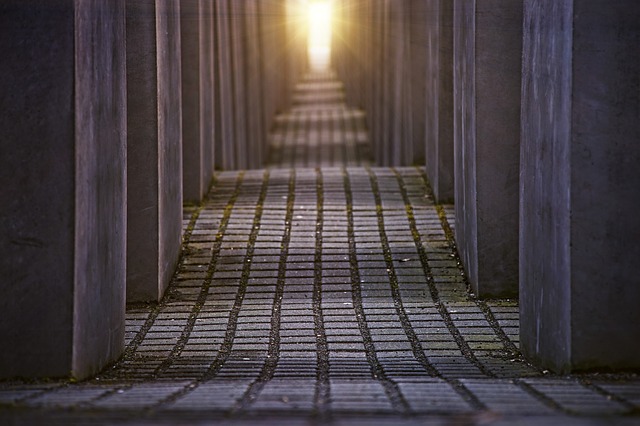
Poland’s New Holocaust Museum to Open in 2023 — Despite some Controversy
Late last year, I was excited to learn about Poland’s plans to open The Warsaw Ghetto Museum, a state-of-the-art facility dedicated to the Jews who were imprisoned and murdered in Poland’s Warsaw Ghetto during Nazi occupation in World War II.
Currently undergoing extensive renovations in Poland’s capital, the museum will be housed in a former children’s hospital founded by Jewish philanthropists in the late 19th century; a building which was enclosed within the ghetto’s walls. The facility is slated to open in 2023 on the 80th anniversary of the Warsaw Ghetto Uprising which was the single largest revolt by Jews during the war and ended in the tragic loss of 13,000 Jewish people.
Daniel Blatman, the chief historian of the institution, says it will be the first Polish museum to focus entirely on the Holocaust, although Poland has numerous commemoration sites across the country including at the former Auschwitz concentration camp.
Blatman, a Holocaust historian at the Hebrew University of Jerusalem, outlined ambitious plans for the museum.
In an interview with the Associated Press, Blatman says, “What I would like to achieve is a wide perspective of Jewish life and death during the Nazi occupation through the perspective of the history of the Warsaw ghetto.” He also described plans to address the experiences of Jews throughout Poland in that era, including the many other ghettos created by the occupying Germans.
Another key mission of the museum will be to showcase the fate of Poland’s Jews as part of both Jewish and Polish history.
“Polish Jews who perished during the Holocaust perished as Polish citizens of Jewish origin. And I believe that the right way to present the history of that in Warsaw is to find ways to integrate it into the overall picture of this city under Nazi occupation,” says Blatman. “There was a wall separating Jews and Poles during the Holocaust but that wall was created neither by Jews nor by Poles. It was created by the Germans.”
The project has been met with some controversy. Some accuse Blatman and the right-wing Polish government of centering Poland’s national memory around a constructed narrative that exalts Poles in saving Jews while minimizing their responsibility and/or complacency in the persecution of the Jewish population.
Hava Dreifuss, a history professor at Tel Aviv University who also heads Yad Vashem’s Center for Research on the Holocaust in Poland denied the museum’s request to hire her as a researcher due to the issue.
“The Polish government is trying to advance research and commemoration of the Holocaust as long as it involves Jews who were killed by the Germans,” Dreifuss says.
During the Holocaust, Dreifuss mentions there were also many Jews who perished as a result of direct or indirect Polish involvement. She believes the regime is trying to avoid or limit addressing these matters, despite the existence of a great deal of documentation and research.
Blatman, however, ensures critics that he hasn’t encountered any political involvement during the planning stages and has worked in full academic freedom. He says, “I wouldn’t have agreed to work as a historian in a place where I’d be required to bend my professional approach to political considerations.”
Museum director, Albert Stankowski, includes that despite these claims, the museum is independent and will present an objective overview of the Poles who aided Jews and those who were culpable in their deaths.
Nearly 3.3 million people of Jewish faith and heritage lived in Poland on the eve of German occupation, but nearly all of them lost their lives during the war, making up half of all Jews killed in the Holocaust. Holding Jewish-Polish heritage myself, I hope that the museum’s mission stays true in honoring and educating others on the legacy of these powerful stories.
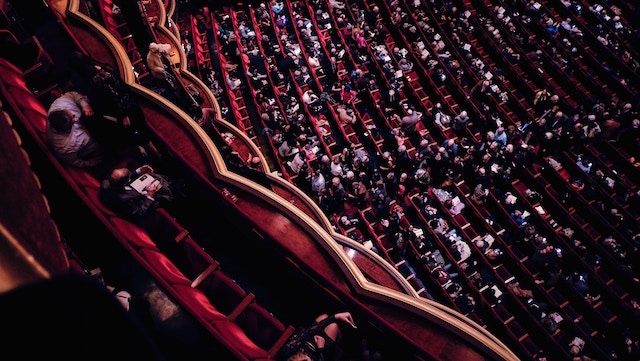
Spotlight: The 28th New York Jewish Film Festival Comes to NYC
In November, The Jewish Museum and Film Society of the Lincoln Center announced that the 28th New York Jewish Film Festival (NYJFF) will be held from January 9 – January 22, 2019. The annual cultural event presents the finest narratives, documentaries and short films on the Jewish experience each year and will feature new work and restored classics by international filmmakers. The 2019 lineup includes 30 wide-ranging features ranging from iconic to iconoclastic.
On opening day, the festival kicks off with Eric Barbier’s epic film Promise at Dawn which stars Charlotte Gainsbourg and Pierre Niney. The memoir details the colorful life of the infamous French author Romain Garey from his childhood conning Polish high society until his service in the Free French Air Forces.
The film festival’s centerpiece selection showcases the 3.5 hour miniseries, Autonomies, directed by Yehonatan Indursky. Set amidst an alternative reality in present-day Israel, the dystopian drama depicts a custody battle between two warring factions: the State of Israel and an ultra-Orthodox Haredi autonomy. The universal tale focuses on themes of identity, religion, love, politics and personal freedom.
Both returning and new filmmakers will make their mark on the festival this year. Amos Gitai returns with a cerebral drama, A Tramway in Jerusalem, which connects short vignettes of the city’s Arab and Jewish life with the tramway as the film’s thematic and metaphorical vehicle. Additionally, first-time director Aäläm-Wärqe Davidian will premiere Fig Tree in the U.S. The drama follows a young woman who plans to flee to Israel during the Ethiopian Civil War with her family, but not before trying to save her Christian boyfriend from the draft.
Documentaries will also explore the power of Jewish history and heritage. Roberta Grossman’s gripping documentary Who Will Write Our History? uses archival material uncovered after WWII to tell the story of a resistance group in the Warsaw Ghetto during Nazi occupation and examines the everyday life in occupied Warsaw. Guests might also want to check out Dear Freddy from Rubi Gat. The documentary tells the story of a proud and openly gay Jew in Nazi Germany who later protected hundreds of children in the Theresienstadt and Auschwitz concentration camps by setting up a day care center.
Special programs will premiere the new digital restoration of Ewald Andrew Dupont’s 1923 silent film, The Ancient Law, with a new score and live accompaniment by pianist Donald Sosin and violinist Alicia Svigals.
The NYJFF is among the oldest and most prominent Jewish film festivals in the world and is made possible by the Martin and Doris Payson Fund for Film and Media. Devoted to preserving and elevating art and culture, The Jewish Museum and Film Society of the Lincoln Center have remained honored hosts of the event since the festival’s establishment in 1992, helping to double the event in size and scope.
Shining a spotlight on our Jewish heritage is a great way to encourage a shared passion for film and an understanding of Jewish history and culture. Check out the list of the full lineup at the Film Society of the Lincoln Center’s website. Screenings will be shown at the Walter Reade Theater, 165 West 65th Street in NYC.
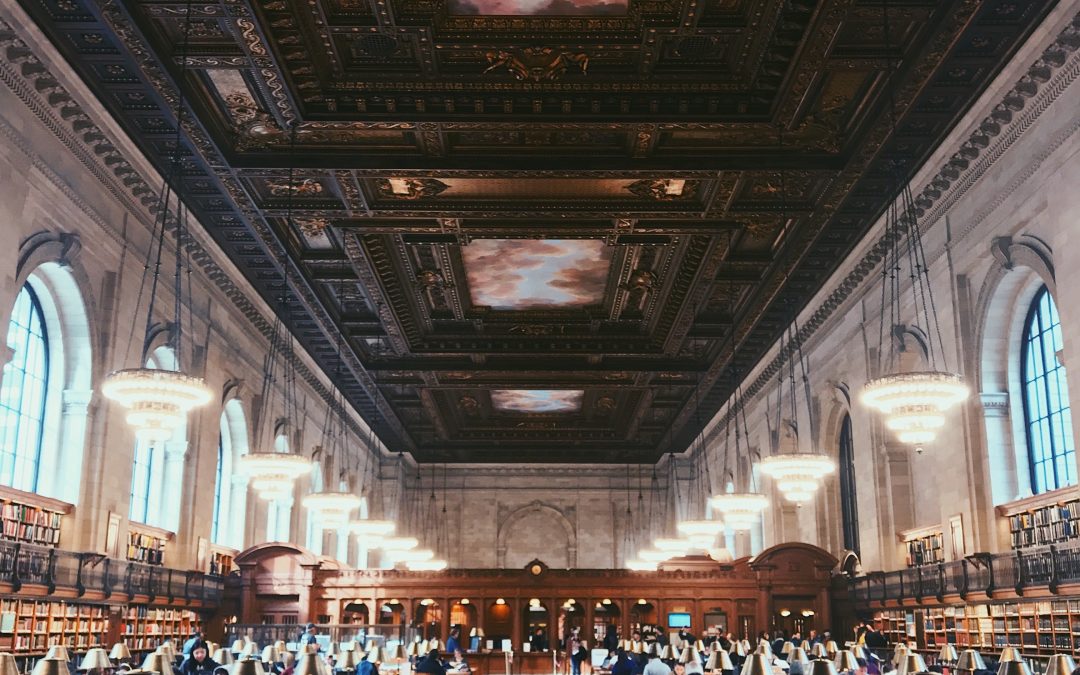
Maira Kalman’s “The Elements of Style” Collection Acquired by the Jewish Museum and New York Public Library
The Jewish Museum and New York Public Library have jointly acquired the full collection of 57 gouache illustrations by Maira Kalman for the 2005 edition of The Elements of Style.
The Elements of Style is a grammar reference book originally published by William Strunk Jr. in 1918. It was edited by E.B. White in 1959, whose edition popularized the text. Kalman, a well-known designer, author, illustrator and artist, adapted the book with her own playfully irreverent illustrations of the book’s grammatical rules and phrases. It has since become one of her most well-received projects.
She discovered the book in 2002 while at a used bookstore, finding it amusing and subject to visual interpretation. The illustrations in the series depict humorous interpretations of the text: for example, one image depicts a guilty-looking basset hound using one of the book’s grammatical phrases, “Well, Susan, this is a fine mess you’re in.”
Tony Marx, New York Public Library President and Claudia Gould, The Jewish Museum’s Helen Goldsmith Menschel Director, both praised Kalman’s work and espoused their excitement in obtaining the full collection. “We are so proud to partner with The Jewish Museum to acquire the 50-plus paintings from this significant contemporary work,which exemplifies the very nature of what happens in our research libraries every day: primary sources being used to create new works,” said Marx told Broadway World.
Gould had similar sentiments. “This is the first time that the Jewish Museum has collaborated with another institution on a major acquisition,” she said. “The joint acquisition with The New York Public Library of Kalman’s paintings for The Elements of Style allows us to significantly expand our holdings of Kalman’s work with this witty, incisive series by a unique illustrator, artist, and author.”
Kalman commented, “Since I am Jewish and since I adore libraries, isn’t it thrilling that these two glorious institutions share the work. I make books. And I make art. The works are the intersection of these, mixed with a great dollop of curiosity. In a kind of Talmudic manner, I think E.B. White would be pleased. Doesn’t it all make complete wonderful sense!”
The Jewish Museum exhibited a retrospective of Kalman’s work in 2011 titled Maira Kalman: Various Illuminations (of a Crazy World), organized by the Institute of Contemporary Art in Philadelphia. The Jewish Museum’s collection also includes six works on paper by Kalman, and commissioned her in 2014 to create a mural for Russ & Daughters, the Jewish Museum’s restaurant. It was finished in 2015 and titled In This Life, There Was Very Much.
The New York Public Library named Kalman a Library Lion in 2015 for her contributions to the city and the creative community. She is currently working on illustrations for a book about libraries, which will be published in partnership with Macmillan Publishers and the Library.
Kalman’s The Elements of Style illustration series was showcased in its entirety for the first time in 2017 at the Julie Saul Gallery. Kalman has previously sold individual works from collections before, but made the decision to keep the series as a single body of work.
Maira Kalman was born in Tel Aviv in 1949 and moved to New York when she was four. She currently lives in Manhattan. Kalman has published 18 children’s books, writing and illustrating most of them herself, and is a frequent contributor to The New Yorker. She is currently working on an illustrated column for The New Yorker based on her travels to museums and libraries. She is currently represented by the Julie Saul Gallery.
The New York Public Library is a provider of education and information for the people of New York City. There are 92 locations throughout the Bronx, Manhattan and Staten Island, offering free materials, computer access, classes, exhibitions, programming and more. They serve more than 18 million patrons annually, and millions more through online resources.
The Jewish Museum is a unique hub for art and Jewish culture, accessible to people of all backgrounds. It is one of the oldest Jewish museums in the world, and the first institution of its kind in the United States. The Museum offers a wide variety of programs and exhibitions, with nearly 30,000 works of art, ceremonial objects and media in their collection, spanning over 4,000 years of history.
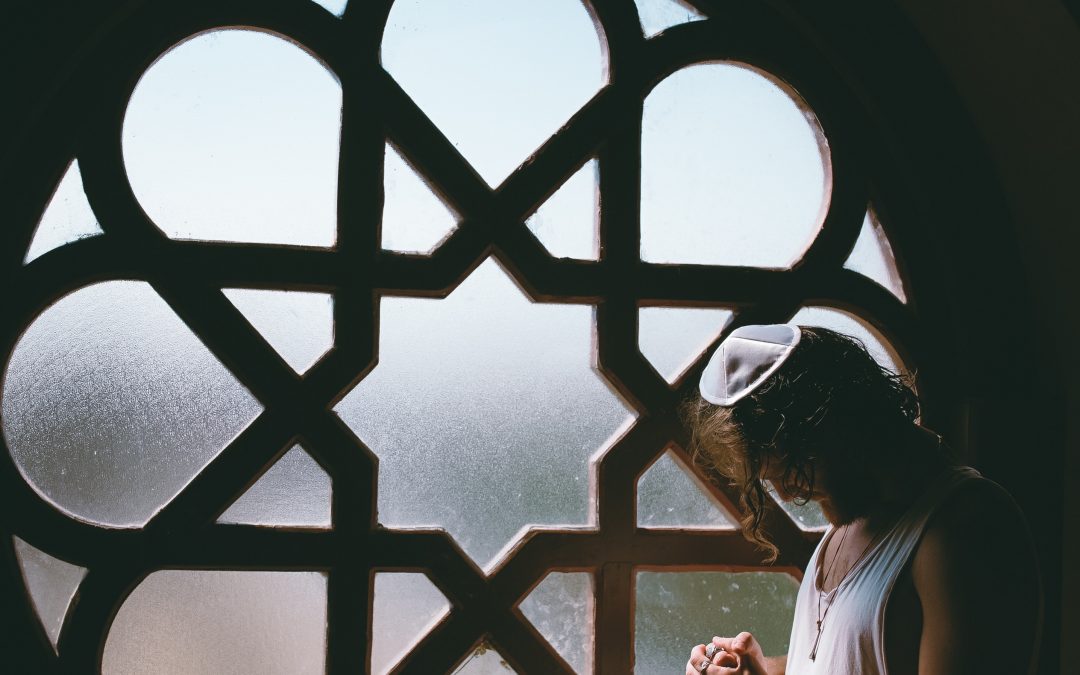
Charity Spotlight: Chai Lifeline
For Chai Lifeline, it is of the utmost importance that seriously ill children and their families have the opportunity to lead normal and fulfilling lives. The organization’s members, including 7,000 volunteers worldwide, strive to give emotional and social support to those struggling with illness by offering a wide variety of services and experiences to provide children, families and communities with a peace of mind that is otherwise hard to come by.
Chai Lifeline is most well-known for their summer program Camp Simcha, a camp in Glen Spey, NY that offers a full range of camp activities to children on active treatment, one of the only cancer camps to do so. Camp Simcha Special was initiated in 2001, the first camp designed to accommodate the needs of children with more than 60 different diagnoses. The programs offer traditional camp activities such as craft making, sports, talent shows, swimming, boating and much more. All equipment is modified to be accessible to every child. There is also a family center on the campus for families to stay while camp isn’t in session, if they need it.
Aside from Camp Simcha, Chai Lifeline offers a number of special events and programs for ill children and families, such as family days, holiday parties, sporting events and live shows. In the past, Chai Lifeline has helped organize trips to the Super Bowl, Orlando trips to the various theme parks, and even a 10-day trip to Israel for teens called “Wish at the Wall.”
The organization runs Chai House, a residence located near The Children’s Hospital of Philadelphia to house families spending longer periods of time in the hospital. Chai Lifeline gives kids educational assistance too, with services like ChaiLink connecting homebound children to classrooms via webcam, and the Homebound Educational Learning Program for tutoring children who are recovering or in the hospital.
Chai Lifeline aims to help the families who are struggling alongside their ill child. The organization offers Big Brothers and Sisters to ill children, and extends this service to siblings as well. Insurance support, case managers, and counselors guide parents in dealing with their child’s illness, building long-lasting relationships in the process. Chai Lifeline also provides transportation to and from medical appointments, and sends meals to patients’ homes when parents are too busy caring for their sick child, ensuring that every member of the family is taken care off.
In addition, Chai Lifeline is dedicated to contributing to the community, and has developed the Project C.H.A.I. Crisis Intervention program, which aids parents, children, teachers, and clergy in coping with traumatic events. The team specializes in providing emotional and professional support to all members of the community. The project has helped communities work through tragedies such as Leiby Kletzky’s death in 2011 and natural disasters like Hurricane Sandy in 2012.
The Charatan Family Foundation is proud to support Chai Lifeline’s admirable goal of raising the emotional quality of life for children with chronic or genetic illnesses, and their non-medical contributions provide overwhelming support for the families and communities who need it most. With so many different services that assist communities in a multitude of ways, Chai Lifeline demonstrates their passion for allowing children and their families to feel hope, comfort, and above all, a sense of normalcy.